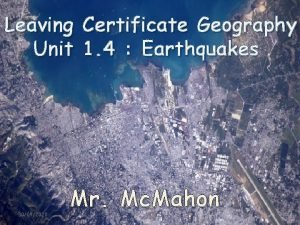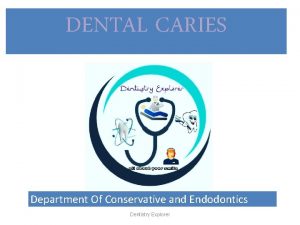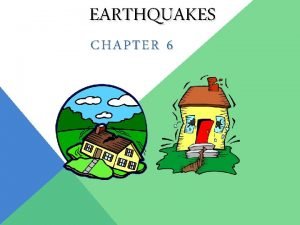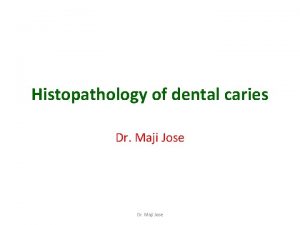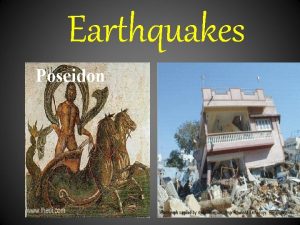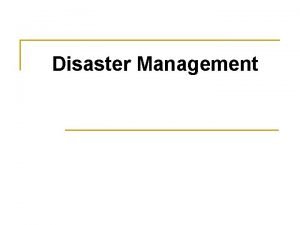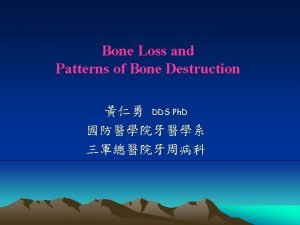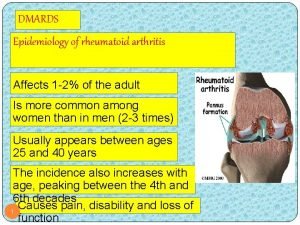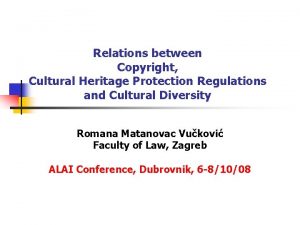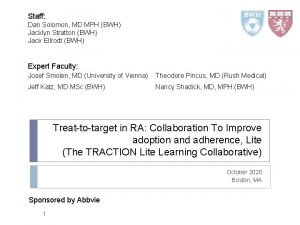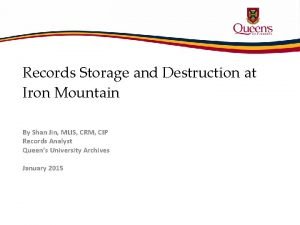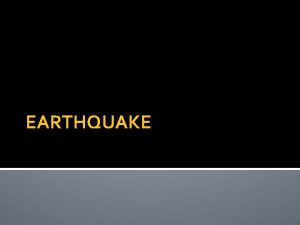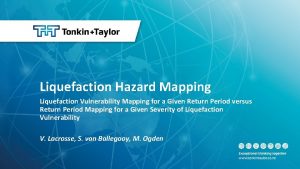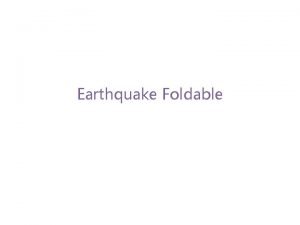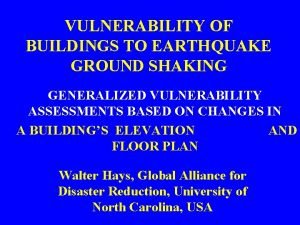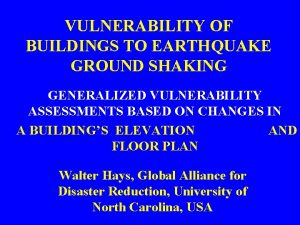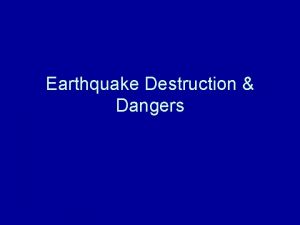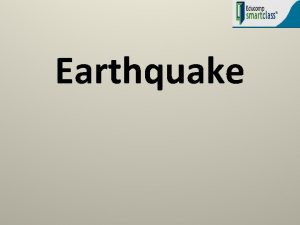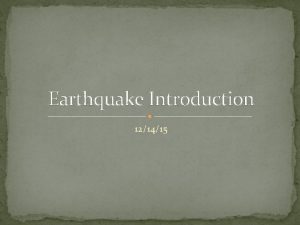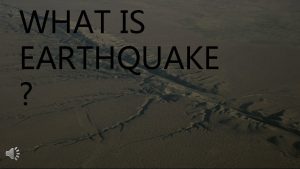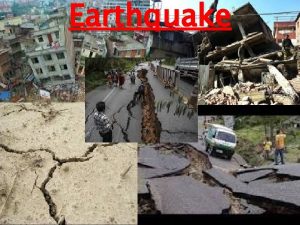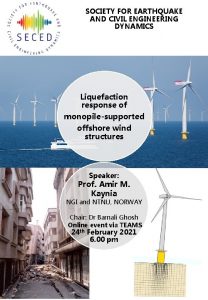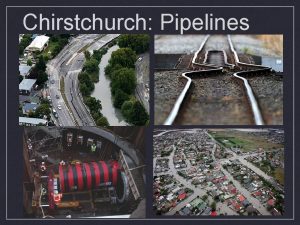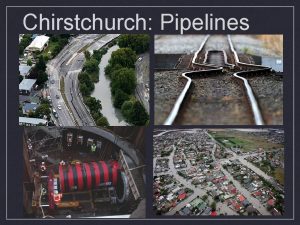Earthquake Destruction Destruction results from Ground shaking Liquefaction





















- Slides: 21

Earthquake Destruction • Destruction results from – Ground shaking – Liquefaction of the ground • Saturated material turns fluid • Underground objects may float to surface – Landslides and ground subsidence – Fires © 2015 Pearson Education, Inc.

Damage caused by the 1964 earthquake in Alaska © 2015 Pearson Education, Inc.

Liquefaction © 2015 Pearson Education, Inc.

Earthquake Destruction • Tsunami, or seismic sea waves – 2004 Indonesian Earthquake – 2011 Japan Tsunami • Tsunami Warning System © 2015 Pearson Education, Inc.

Tsunami Travel Times to Honolulu © 2015 Pearson Education, Inc.

© 2015 Pearson Education, Inc.

Earthquake Belts and Plate Boundaries • 95% of energy from earthquakes in a few narrow zones – Circum-Pacific belt – Alpine-Himalayan belt • Transform faults and strike-slip faults © 2015 Pearson Education, Inc.

Earthquake Prediction • Short-range – no reliable method yet devised for short-range prediction • Long-range forecasts – Premise is that earthquakes are repetitive – Region is given a probability of a quake © 2015 Pearson Education, Inc.

Earthquake Prediction • Seismic Gaps – Tools forecasting earthquakes © 2015 Pearson Education, Inc.

Earthquake Prediction • Paleoseismology – Studies timing, location, and size of prehistoric earthquakes © 2015 Pearson Education, Inc.

Earth’s Interior • Most of our knowledge of Earth’s interior comes from the study of P and S earthquake waves – Travel times of P and S waves through Earth vary depending on the properties of the materials – S waves travel only through solids © 2015 Pearson Education, Inc.

Earth’s Layers • Layers based on physical properties – Crust • Thin, rocky outer layer • Varies in thickness – Roughly 7 km (5 miles) in oceanic regions – Continental crust averages 35– 40 km (22– 25 miles) – Exceeds 70 km (40 miles) in some mountainous regions © 2015 Pearson Education, Inc.

© 2015 Pearson Education, Inc.

Earth’s Layers • Layers based on physical properties – Crust • Continental crust – Upper crust composed of granitic rocks – Lower crust is more akin to basalt – Average density is about 2. 7 g/cm 3 – Up to 4 billion years old © 2015 Pearson Education, Inc.

Earth’s Layers • Layers based on physical properties – Crust • Oceanic Crust – Basaltic composition – Density about 3. 0 g/cm 3 – Younger (180 million years or less) than the continental crust © 2015 Pearson Education, Inc.

Earth’s Layers • Layers based on physical properties – Mantle • Below crust to a depth of 2900 kilometers (1800 miles) • Composition of the uppermost mantle is the igneous rock peridotite (changes at greater depths) © 2015 Pearson Education, Inc.

Earth’s Layers • Layers based on physical properties – Outer Core • • Below mantle A sphere having a radius of 3486 km (2161 miles) Composed of an iron-nickel alloy Average density of nearly 11 g/cm 3 © 2015 Pearson Education, Inc.

Earth’s Layers • Layers based on physical properties – Lithosphere • Crust and uppermost mantle (about 100 km thick) • Cool, rigid, solid – Asthenosphere • • Beneath the lithosphere Upper mantle To a depth of about 660 kilometers Soft, weak layer that is easily deformed © 2015 Pearson Education, Inc.

Earth’s Layers • Layers based on physical properties – Mesosphere (or lower mantle) • 660– 2900 km • More rigid layer • Rocks are very hot and capable of gradual flow – Outer core • Liquid layer • 2270 km (1410 miles) thick • Convective flow of metallic iron within generates Earth’s magnetic field © 2015 Pearson Education, Inc.

Earth’s Layers • Layers based on physical properties – Inner Core • Sphere with a radius of 1216 km (754 miles) • Behaves like a solid © 2015 Pearson Education, Inc.

Views of Earth’s Layered Structure © 2015 Pearson Education, Inc.
 Difference between seizure and epilepsy
Difference between seizure and epilepsy Striking or shaking instruments
Striking or shaking instruments We will not be shaken we will not be moved
We will not be shaken we will not be moved Liquefaction foci dentin
Liquefaction foci dentin Therapeutic incompatibility is due to
Therapeutic incompatibility is due to Earthquake damage scale
Earthquake damage scale Millers liquefaction foci
Millers liquefaction foci Liquefaction occurs when seismic waves cause __________.
Liquefaction occurs when seismic waves cause __________. Pycnose reversible
Pycnose reversible Transverse clefts dentin
Transverse clefts dentin Air liquide
Air liquide Snycline
Snycline Destruction of mankind
Destruction of mankind Reverse architecture bone loss
Reverse architecture bone loss Joint destruction
Joint destruction 1962
1962 Destruction of mankind
Destruction of mankind Pride goes before destruction
Pride goes before destruction Habitat destruction
Habitat destruction The destruction of sennacherib by lord byron
The destruction of sennacherib by lord byron Joint destruction
Joint destruction Iron mountain records storage
Iron mountain records storage





